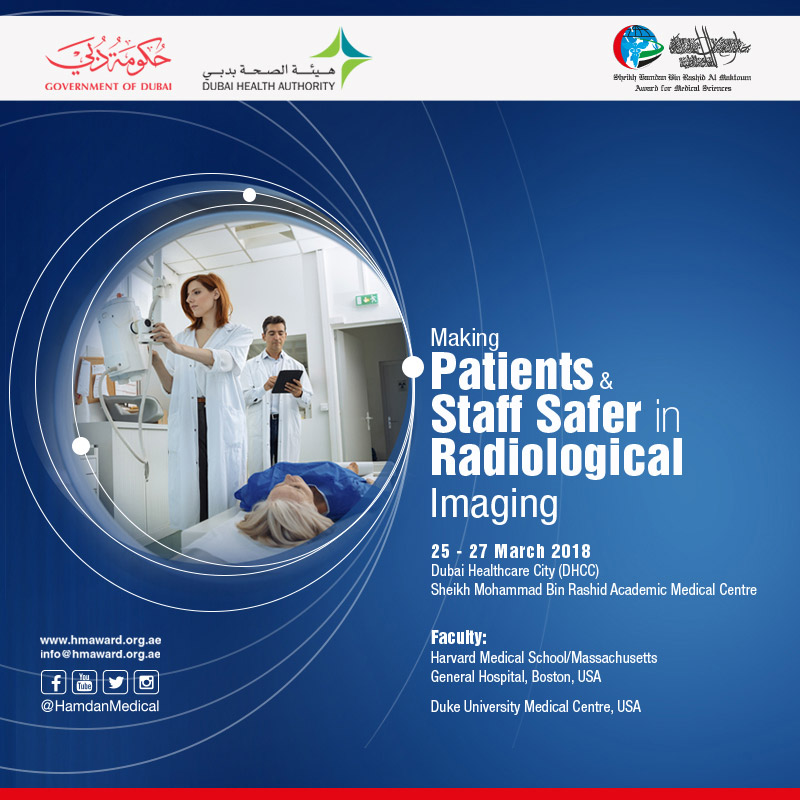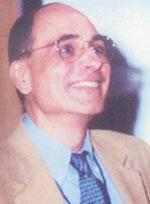Prof. Charles Anthony Dinarello
International Awards
Hamdan Award for Medical Research Excellence
- Biology of Aging
2005-2006
Prof. Charles Dinarello was born in 1943 in Boston, USA, and graduated from Boston University. After completing his post graduate studies and receiving the degree of Master of Medicine from Yale University he went into employment in the profession.
While still a medical student at Yale University, his first paper was published on the Kupffer cell as the source of leukocytic pyrogen and its role in pyrogenic tolerance. After finishing his basic clinical training at the Massachusetts General Hospital, Dinarello moved to the National Institute of Health as a Clinical Associate and conducted a double-blind, placebocontrolled trial of colchicine for the treatment of Familial Mediterranean Fever (FMF), today still considered the standard of therapy for this disease. Subsequently, he reported the leukocyte effects of colchicine therapy in these patients. Thirty years later, the gene mutation in FMF was discovered by others, but the gene defect results in defective overproduction of IL-1 B. Indeed, IL-H3 accounts for the most of inflammation in FMF, and much of our present-day understanding of IL4-mediated inflammation is derived from Prof. Dinarello's contributions.
Prof. Dinarello made major contributions to the understanding and treatment of diseases mediated by cytokines, particularly IL-I and tumor necrosis factor (TNF). Clinical investigation on cytokine-mediated diseases was greatly advanced by Prof. Dinarello leading his co-workers to the landmark accomplishment of the molecular cloning of human IL-If3 in 1984. But even before this accomplishment, Prof. Dinarello had purified IL-I, and in a series of discoveries, provided evidence that response to infection such as fever, sleep, anorexia, leukocytosis, hypotension, elevated acute phase proteins, muscle wasting, lymphocyte activation and several others were due to IL-I. His New England Journal of Medicine paper on the "IL-I and the Pathogenesis of the Acute Phase Response" proposed that this single molecule was capable of eliciting multiple and varied biological effects. However, this concept was met with skepticism. Prof. Dinarello's dedicated efforts in the purification and the molecular cloning of IL-I were rewarded when recombinant human IL-I exhibited each of the biological properties he and others had claimed for IL-I.
In 2004, the editors of the Journal of Clinical Investigation wrote that "The revolution in recombinant technology vindicated laborious and persistent efforts to purify and characterize "leukocytic pyrogen" as specific inflammatory cytokines such as IL-I and TNF, which became available for study". The Dinarello laboratory at Tufts University was at the vanguard of this effort, and their 1988 report in the JCI arguably established the identity of these cytokines as the long-sought pyrogenic substances that induce hemodynamic and hematological changes typical of septic shock. The research described in the report encouraged the development of cytokine inhibitors now in use for the therapy of rheumatological disorders. It was clear that studies on cytokine-mediated diseases had been greatly advanced by Dinarello and his co-workers.
Prof. Dinarello's research and published works have become an essential reference at world level. For example, his work on IL-1 is among his most important papers undertaken in 1984 and published as a Citation Classic. Ten years after its publication, this paper was cited in more than 1,800 others. During the twenty years from 1983 to 2002, Prof Dinarello was seeded fourth among scientists of the world (Science magazine: Issue 302, p779, 2003).
Among his discoveries IL and its derivatives have contributed to a broader understanding of many diseases and their relationship with the immune system, such as the role of white blood cells, lymphatic compounds, etc. For instance, those discoveries have led to a better understanding of rheumatic fever, juvenile idiopathic arthritis, Still's disease, autoimmune diseases, asthma, and auto-inflammatory diseases.
In conclusion, it is possible to say that the basic as well as clinical research on IL-I that characterizes Dinarello's contributions laid the ground work for much of the therapeutic advances in the treatment of inflammatory diseases. The corpus of his work has also stimulated the development of newer drugs to reduce IL-I activities. These newer therapies include oral inhibitors of caspase-I, neutralizing anti- IL-I (3 monoclonal antibodies and the IL-I each in clinical trials. Thirty years ago, few paid attention to small, biologically active proteins, exceedingly difficult to purify even in sub-microgram quantities. But, Prof. Dinarello's persistence in purification of leukocytic pyrogen begun in 1974 and resulting in the cloning of the cDNA for IL-I3 ten years later accelerated the development of "cytokine biology" with its insights into the mechanism of inflammatory diseases as well as opportunities for cytokine-based therapies. Of course, over the years, many contributed to the field as cytokine biology gained legitimacy, but Dinarello's work broke new ground, which continues to be validated today.
In summary, Prof. Charles Dinarello's contributions to the understanding and therapy of cytokine-mediated disease is outlined above, his work and the work of those whom he trained has significantly impacted on new directions in biology and medicine. Prof. Charles Dinarello deserves the Hamdan Award for Medical Research Excellence in the category of Cytokines in pathogenesis & Therapy of Diseases for the 2005-2006 session.

